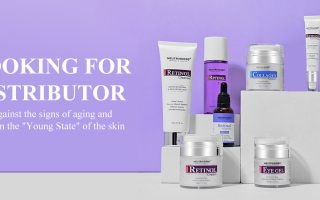Keeping the proper body temperature, preventing dehydration, and avoiding heat strokes require drinking plenty of water during the summer when sweating and perspiration rise. The recommendation is to combine mineral salts with a diet high in fruits & vegetables and to pay attention to the skin’s proper hydration.
The simplest and most priceless gift we can give ourselves to feel good is lots of water. Consider that water, an element essential to all bodily functions, comprises about 60% of the human body (although individual differences in body composition, age, and gender can affect this percentage).
Numerous advantages, both inside and outside the body, come with maintaining good hydration.
- Keep yourself adequately hydrated when it’s hot outside.
- Experts advise consuming 6 to 8 glasses of water per day in addition to fresh fruit and vegetables, which are high in water, vitamins, and mineral salts, to maintain the body’s ideal hydration levels.
- Our body excretes about 2 liters of water daily in a typical setting. Intense physical activity, the weather, the temperature outside, and some specific physical conditions are all variables that can alter the loss of liquids and mineral salts, which must be considered. A hydro-saline imbalance results if the liquids lost through sweat are not adequately replaced.
What is the hydro-saline balance, and how can we replace the lost mineral salts?
It is important to mention the role that mineral salts, inorganic substances that are crucial for our health, play in hydration.
Our bodies obtain mineral salts from the water and food we drink. Their consumption is always important, but in some circumstances, even more so, such as during climatic contingencies or diets that may result in an excessive expulsion or a deficiency in these nutrients.
It is crucial to make up for losses to prevent this:
- consuming a lot of water rich in minerals
- helping us with nutrition: In fact, some foods—especially fruits and vegetables, learn more—are very high in magnesium and potassium, so it is advisable to up our intake of these nutrients or to begin consuming them more frequently.
- Maintaining a salt-free diet with care.
Minerals are very readily available in drinking water. However, when there is more sweat or need, particularly when exercising or in the hot weather, hydro-saline integration can be used to make up for any salts that may be deficient.
Therefore, we take care to constantly replenish our magnesium stores because, among other things, it is crucial for creating energy. We believe this necessary mineral is required for every bodily process (learn more about how magnesium supports our natural well-being).
Also essential is potassium, useful in rehydration during and after physical effort and in maintaining normal blood pressure levels.
The skin also needs hydration and even more after sun exposure.
In the same way, the body requires water; the skin also requires daily hydration. Learn how to have soft, hydrated body skin to have younger-looking skin and healthier, more radiant skin.
By taking care of our skin with some essential active ingredients, especially after sun exposure, we can also hydrate “from the outside.”
In particular, we can select a specific serum with a soothing and moisturizing action and specific moisturizing and anti-aging active ingredients to restore the ideal hydration of the body and face skin exposed to the sun and find immediate relief.
Hyaluronic acid, an essential component of the skin that, thanks to its structure, can retain water molecules and release them gradually toward the deeper layers, providing immediate hydration and luminosity, is undoubtedly one of these assets.
Vitamin E, which has a calming, emollient, hydrating, anti-redness action and a high antioxidant activity, is the other ally in the fight against skin dehydration. It is particularly helpful for preventing wrinkle formation and elasticity loss by acting as a shield against free radicals produced by oxidative stress (UV rays, smoke, and pollution).

